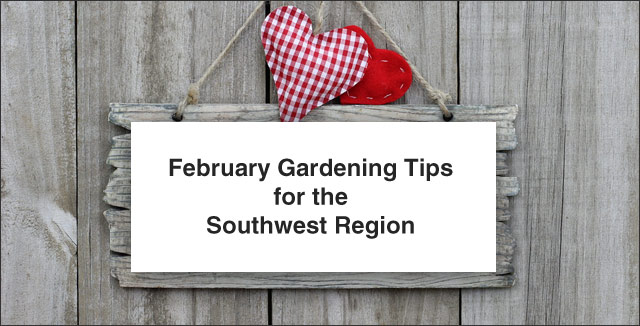February Gardening Tips for the Southwest Region
Last updated: May 25, 2021

Have you had troubles with your newly planted trees and shrubs surviving the hot summers?
Can you believe it? It is time to equip your garden and landscape for the upcoming summer months. Follow these tips to a more fruitful garden come summer.
The Southwest Region’s February Gardening Tips
Landscaping Tips
- Plant your bare root tree and shrubs this month. To find out more about planting bare root trees and shrubs, please see: How to Plant Bare Root Trees in 8 Simple Steps.
- Make sure your newly planted trees and shrubs survive this coming summer by installing aeration tubes. Rootwell Product Inc. Pro-318s aeration tubes are scientifically proven to increase root growth, about ground growth and overall the trees chances of surviving.
Fruit and Vegetable Tips
- Plant your blueberries, blackberries and grapes this month.
- February is a great month for harvesting your cool-season crops. However, be watchful for a spike in temperature because hotter temperatures can cause these vegetables to flower and blot.
- Organic Gardening reports that in the early part of this month, you can plant cabbage, peas, spinach, broccoli, onions, celery and chives.
Perennial and Annual Gardening Tips
- According to Better Homes and Gardens, once the fear of the last frost has passed, set out your warm-season annuals. Find out when your last frost date is by putting your city and state into The Old Farmer’s Almanac First and Last Frost Dates Calculator.
- Remember to divide your fall-blooming perennials this spring and your spring-blooming perennials this fall.
General Gardening Tips
- The Old Farmer’s Almanac warns about insects in your garden during the winter months. Make sure and control them by spraying your plants with dormant horticulture oil.
Take Away
February is a busy month for the Southwest gardener, from planting trees, vegetables to diving your fall-blooming perennials.
Are you considering adding hydrangeas to your garden? If so, please see, Planting Hydrangeas: What Every Beginner Gardener Needs to Know.



